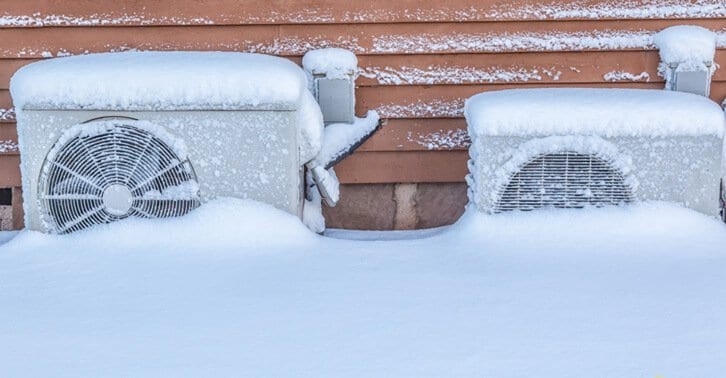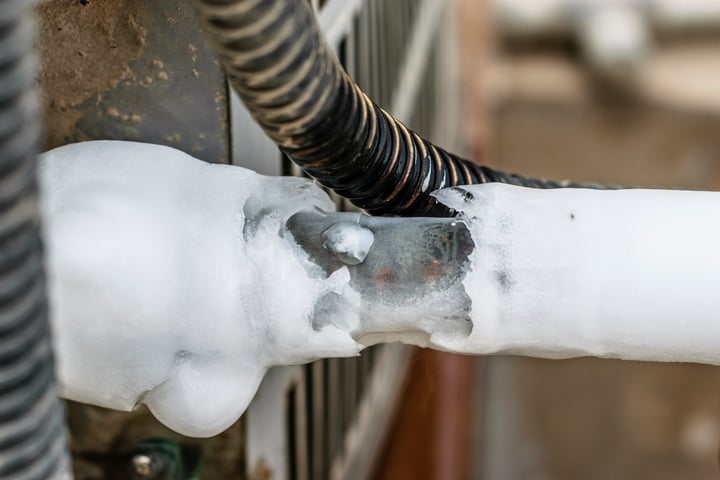Frozen AC Pipe - Identifying and Resolving the Issue Quickly
Frozen AC Pipe - Identifying and Resolving the Issue Quickly
Blog Article
Right here in the next paragraph you will find a lot of outstanding information and facts in relation to What Causes AC Pipes To Freeze?.

Introduction
Uncovering that your air conditioner pipe is frozen can be worrying, especially throughout hot summertime when you rely upon your ac unit the most. Recognizing what to do in such a circumstance is critical to avoid more damage to your cooling system and ensure your convenience inside.
Understanding the Causes
Numerous factors can contribute to the cold of an air conditioner pipe. Comprehending these causes can assist you resolve the concern effectively.
Lack of Airflow
One common reason for an icy air conditioner pipeline is inadequate air movement. When the air movement over the evaporator coil is limited, it can create the coil to go down below freezing temperature, bring about ice development on the pipeline.
Reduced Refrigerant Levels
Insufficient refrigerant degrees in your AC system can additionally result in a frozen pipe. Reduced cooling agent levels can cause the pressure in the system to drop, leading to the freezing of wetness on the evaporator coil.
Cold Weather Conditions
In cooler environments, freezing temperature levels outside can contribute to the freezing of air conditioner pipes. If your AC device is not appropriately protected or if there are leakages in the ductwork, chilly air can penetrate the system, causing the pipe to freeze.
Dirty Air Filters
Unclean or blocked air filters can limit airflow in your air conditioning system, bring about various problems, consisting of an icy pipeline. It's necessary to replace or cleanse your air filterings system on a regular basis to make certain correct airflow and avoid ice buildup.
Signs of a Frozen AC Pipe
Recognizing the signs of a frozen AC pipeline is crucial for punctual activity.
Minimized Airflow
If you see a considerable reduction in air flow from your vents, it can indicate an icy pipe.
Ice Buildup on the Pipe
Noticeable ice build-up on the refrigerant line or the evaporator coil is a clear indicator of a frozen a/c pipeline.
Weird Sounds from the Unit
Uncommon noises, such as hissing or gurgling, originating from your air conditioning device can signal that there's ice existing on the pipe.
Immediate Actions to Take
When faced with an icy air conditioning pipeline, it's important to act quickly to avoid more damages to your cooling system.
Shutting off the air conditioner
The primary step is to switch off your air conditioning system to prevent the system from running and intensifying the concern.
Checking for Blockages
Examine the area around the indoor system for any type of blockages that may be blocking air flow, such as furnishings or drapes.
Defrosting the Pipe
You can utilize mild techniques like putting towels soaked in warm water around the icy pipe to aid thaw it gradually.
Safety nets
Taking preventive measures can help avoid future events of an icy AC pipe.
Routine Maintenance Checks
Arrange routine upkeep get in touch with a specialist HVAC professional to make certain that your AC system is running effectively.
Changing Air Filters
Consistently change or cleanse your air filters to stop air flow constraints and preserve optimum performance.
Shielding Exposed Pipes
If your a/c pipelines are subjected to cool temperatures, take into consideration insulating them to avoid cold throughout winter months.
Seeking Professional Help
If DIY techniques fall short to resolve the issue or if you're unsure about exactly how to proceed, it's finest to seek support from a qualified HVAC service technician.
When DIY Methods Fail
If your efforts to thaw the pipe or address various other concerns are not successful, it's time to employ a specialist.
Value of Hiring a Professional HVAC Technician
A licensed HVAC service technician has the know-how and tools needed to identify and repair concerns with your air conditioning system safely and properly.
Final thought
Dealing with an icy air conditioning pipeline can be an aggravating experience, however knowing how to respond can help minimize damages and recover comfort to your home. By comprehending the causes, recognizing the indicators, and taking punctual action, you can efficiently deal with the problem and prevent future incidents.
What to Do If Your AC Line Is Frozen
Make Sure All Supply and Return Air Vents Are Open
If you notice problems with airflow, the first thing you should do is check your supply and return vents. Supply vents distribute clean, conditioned air throughout your home. As this air becomes stale, it’s pulled into the return vent, where it’s reconditioned before being sent back out through the supply vent.
When these vents are closed, air won’t flow in the home. Before examining your AC, check the vents in every room and ensure they’re all open.
Check for a Dirty Air Filter
Another possible cause of limited airflow is a dirty air filter. Your air conditioner’s filters catch elements you don’t want to breathe in, such as dirt and dust. Over time, filters can become clogged, ultimately blocking air from flowing in and out. The lack of airflow can then cause the entire coil to freeze and will completely restrict any air from moving through it. The AC may need to be powered off for one to two days to allow the coil to thaw after replacing the filter to allow proper functioning of the unit. This debris can also accumulate on your AC’s evaporator coil, requiring a more serious repair. In general, air filters should be cleaned regularly (about every two weeks).
Assess Your Outdoor Unit
In addition to checking your AC, assessing the outdoor unit is a good idea. Also known as the condensing unit, it works with your interior unit to release heat outside. An issue with the outdoor unit can result in rising internal temperatures.
Overgrown Shrubs or Clogged Leaves
From leaves and twigs to shrubs and debris, there’s no shortage of outdoor elements that can accumulate around your condensing unit. When these elements get lodged inside the unit, they can block airflow. Fortunately, removing the blockage can solve the problem.
Sounds of a Broken Fan
Shrubs and leaves aren’t the only things that can impede your outdoor unit’s airflow. If the fan is broken, the unit won’t be able to properly get rid of heat — which means the internal temperature won’t go down. First, make sure the fan is spinning. If it is, check for the following sounds of a broken fan:
Buzzing Rattling Screeching Hissing Clicking Preventative Measures
Nobody wants to deal with a frozen AC line. In addition to causing problems with your air conditioner, they require professional repairs. On the bright side, there are preventative measures you can take to help ensure this issue doesn’t arise in the first place.
https://www.coopergreenteam.com/blog/what-to-do-if-ac-line-frozen

Do you enjoy more info about Have a Frozen AC Line? Here’s How to Fix It? Create a remark further down. We'd be delighted to see your thinking about this posting. We hope that you come back again in the near future. If you please take the time to share this article if you enjoyed reading it. Many thanks for your time invested reading it.
Call Today Report this page